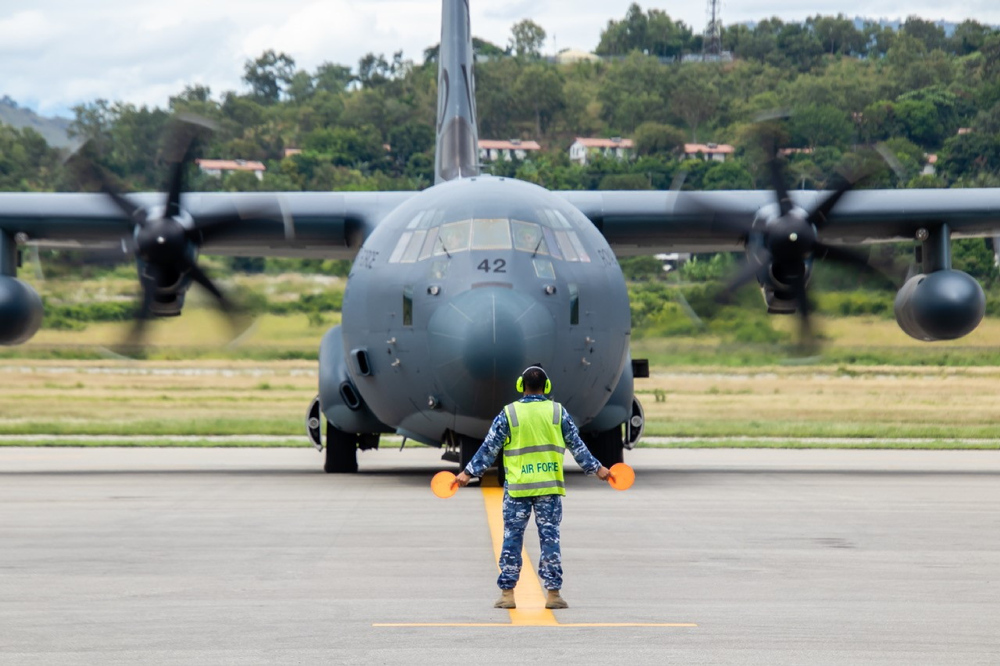Note: The ‘Making the Modern Aviator’ series is targeted specifically at serving RAAF personnel and aims to provide useful career guidance across a range of topics. So there might be some jargon and acronyms that may not be easily understood by others.
This article aims to identify some of the factors that go into the development of an annual posting cycle, to provide further context and insight into how your next posting is determined.
It’s all happening!
This time each year Career Managers (CMs) are well & truly into the posting season. I call this ‘building a house of cards in a hurricane’: where a posting plot is a delicate structure held together by creativity, tenacity and (at times) a pinch of luck, which must endure a ‘hurricane’ of forces threatening to bring it unstuck. All the hurricane needs is to dislodge one card and it could all come down (depending on how integral that card is anyways…)
Imagine your CM as the mildly anxious yet determined adventurer hovering over the ‘card’ structure in the middle of the storm, hoping to keep everything intact.
Every CM has their own style, and each category does things slightly differently. Having said that, they all start with two ingredients: a list of positions they aim to fill in January, and a list of people due for posting (which will include those who received A1 CMB-P codes). Then everything changes…
Let’s talk about positions…
First up, ANYA/O (out of category) selections. CMs track people who will either return from or post into one of these positions. There’s no ‘quota’ that each mustering/specialisation must fill, so CMs don’t know exactly how many people we have for our plot until selections are finalised. I’ll roll in joint rotational positions here too…where CMs need to factor in whether they need to fill one of these in the next posting cycle, or they get an extra person back for their plot.
CMs will also start getting contacted by units wanting to talk succession planning. The default position is that posting dates remain extant, but CMs will look for opportunities to extend/shorten someone’s tenure to mitigate large annual turnovers. Once again there are no guarantees, but they’ll do their best.
Then we include establishment changes, which can add or subtract positions from posting plots. These will (hopefully) be finalised in time to be factored into the main posting cycle, but sometimes they’re delayed and/or CMs are directed to fill new positions as they become available. So CMs have to go with the flow on this to a large extent.
Ok…so once CMs know who they’re losing/gaining through ANYA/O, who’s Planned Date Out (PDO) will change through succession planning, and what establishment changes are likely to occur, they ‘should’ have a fairly good idea of the positions they need to fill. Then we add people’s preferences to the mix…
People
CMs start by interviewing everyone due for posting. In these interviews, your CM will seek to blend the long-term view (your CDP & career aspirations) and the short-term reality (available roles, personal circumstances etc). Interviews are your chance to tell CMs everything you can: if they don’t know it, it can’t be factored into the plot.
CMs are also generally happy to speak with those seeking early postings, although this request will depend on unit succession, workforce health & other capability factors. Bottom line: expect to be in your job for the full tenure, but feel free to ask the question.
Another key factor is discharges, which will occur regularly throughout the year. The amount of notice CMs receive and the position itself will determine if/when someone will be replaced.
Tip: If possible – the more notice people give that they are discharging, the more options there are to find replacements!
Bringing it all together
In reality, CMs start pencilling people against positions as soon as they can, then test & adjust as the year progresses. A CM’s aim is to achieve the best ‘fit’ between the individual’s experience & aspirations, and the organisation’s current & future needs (AKA force-in-being & objective force). Then at some point the music stops, the plot is locked in and postings get released.
But that’s not the end of our story dear readers! CMs will continue to post people throughout the year for a variety of reasons. The process is mostly the same, it’s just usually more nuanced in terms of positions available & individual circumstances. It just depends…
Vacancies
An unfortunate reality at the moment is that Air Force is likely to have more positions to fill than people to fill them. This means that units/organisations will need to hold vacancies. DP-AF is ultimately guided by organisational staffing priorities when determining which positions will be filled (and those that won’t be).
CMs understand that no one wants to hold a vacancy, so they work with units to ensure the impact of this vacancy is mitigated as much as possible. Usually, this involves things such as ensuring multiple CMs don’t stack vacancies in the same area, or coming up with other creative measures in an attempt to minimise the impact.
One of the most common questions a CM will receive is whether they can promote additional people to fill vacancies. While it’s true that sometimes Air Force can (and do) promote additional people, bear in mind that every extra individual promoted (or even posted into a position of higher rank) is one less at their former rank. So DP-AF sticks to those awarded an A1 CMB-P code as much as possible.
Please remember: If your area is required to hold a vacancy, this is not done lightly and you’re not alone. Similarly, if you ask to post into a position, get told no by your CM, then see that it’s vacant, understand that significant effort went into reaching that decision!
As always, if you have any questions or would like to discuss further chat with your CM.




